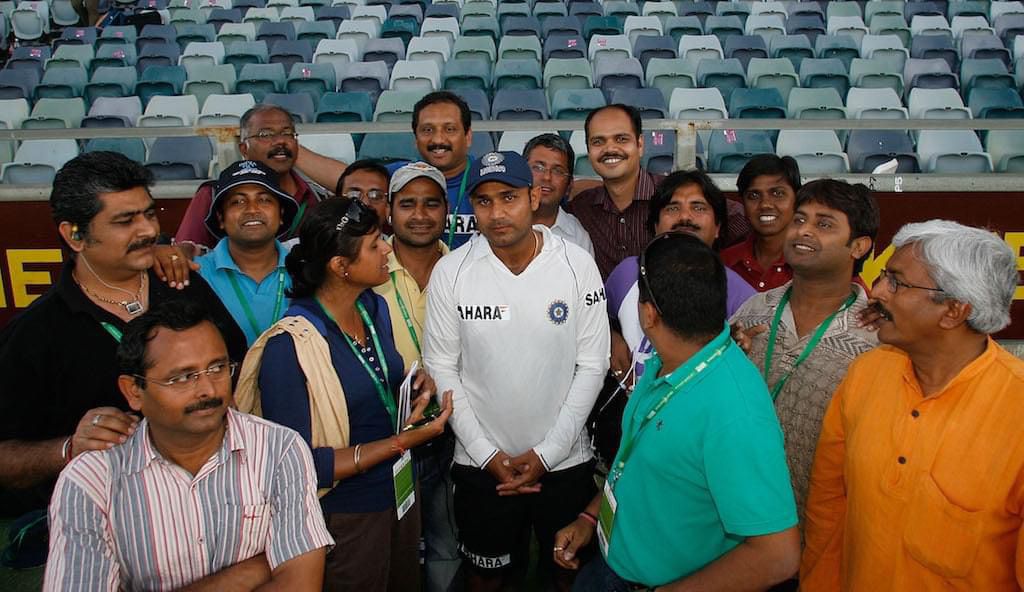
Some of us sigh poignantly or smile in sheer nostalgia when recalling some conversations with sportsperson that we would take to our graves rather than share even as drawing room gossip, let alone write about. Some sigh more wistfully when we realise that similar conversations may never be possible, given the changing equations between the two constituencies.
It seems unimaginable that Sunday Club, a feature on the Indian cricket team’s tour of Pakistan in 1989 that saw players and journalists come together, can ever be recreated. Indeed, for a number of reasons, the days of journalists and sportspersons having heart-to-heart conversations are long gone. Or so it seems.
It is not because players are against criticism. As Sir Donald Bradman, inarguably one of the world’s greatest sportsperson, wrote in Farewell to Cricket (1950): “It is inevitable that a man who is in the public eye should receive criticism. He expects it and does not resent it unless he becomes the victim of unwarranted and unfair accusations which extend beyond reasonable bounds.”
I would like to believe that modern day athletes also have a similar approach. Sachin Tendulkar once told me that he would overlook unfair criticism of his batting. “I tell myself that like cricketers, sometimes reporters also have off-days,” he said, referring to the time he fell to a catch at long leg off a powerful hook shot but a reporter had critiqued only as a top-edge.
So, what has changed for the journalist-sportsperson relationships to be not as strong as in the past? One, the key reasons has to be the increase in the number of sports communication professionals, many of whom have not cut their teeth in the grind of local sport but have grown up hearing expert commentators hold forth their opinions.
For the Latest Sports News: Click Here
Players now use their Instagram and X (Twitter) handles to reach fans. Some have used their interviewing skills to present top-notch conversations with fellow athletes on YouTube. And reporters in conventional media have not found a way around this, except to report on what commentators have said during broadcasts or something from social media posts.
However, long before the word ‘Trending’ caught the fancy of the top guns in the newsroom and lured them to fan those flames, news TV shows would drive the agenda. If an athlete alleged that there was no water to drink during an endurance event, prime time TV anchors would suddenly discover a passion for sport and spice it up.
With a greater focus on coverage of televised and streamed sport, the young hardly go to watch sport at the local level and thus lose out on the chance to forge friendships, let alone cultivate sources. Eventually, this has led to those with information to plant some of it in the minds of those looking for ‘juicy’ stories.
To be sure, the pressure on sports journalists to produce spicy stories has grown manifold. Let me cite my experience. From being asked to write about a sportsperson’s personal life to being asked to write about what would happen to the pups in a litter that another sportsperson’s pet dog had delivered, I have been asked to report what I considered beyond my work as a sports reporter.
The larger responsibility lies with the consumers. Until they demand better sports coverage from those whose services they pay for in some form or the other, the dragon will continue to breathe fire. But when we keep maturing as a society, we may find an increasing thirst for good reporting and good writing rather the hunger to feed the vicarious.
“You should be proud to have the courage to tell your side of the story. There are always two sides.”
Former Australia captain @MClarke23 shares his thoughts on @BoriaMajumdar‘s new book #BannedASocialMediaTrial@AgeasFederal @SimonSchusterIN #TruthRevealed #Banned pic.twitter.com/hl5rBGLR0C
— RevSportz (@RevSportz) April 26, 2024
Besides, long before Anti-Corruption and Integrity Units were established by sports organisations about two decades ago, players could mingle with reporters after a contest and share their insights quite freely. But now athlete-media interactions conducted by sports organisations, public relations firms, are formal, structured, and in some case, controlled.
Then again, the onset of player-agents has been a major influence, too. Until about 30 years ago, we were unfamiliar with and innocent about the roles of player-agents or player-managers. But charged with managing perceptions, they have played the roles of being the facilitators of media interactions with their client sportspersons.
So, is journalism, as I have known it, in peril? Not at all. Not for a moment would I consider hitting the panic button. But yes, the evolution of technology has challenged sports journalists to find practical solutions around the hurdles to have any chance of sustaining credible relationships with athletes.
Truth to tell, old-fashioned relationships exist in some sporting circles, but these are few and far between. With specialised and affordable professional support increasingly available, sportspersons no longer need to open their hearts up to journalists. There really is no point ruing this change but to find new ways to stay relevant as story tellers.
Also Read: Emotions overflow as Rafael Nadal defeats American kid Blanch in Madrid




